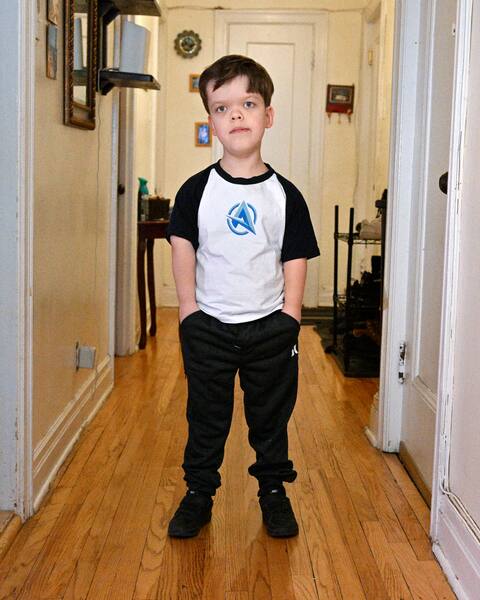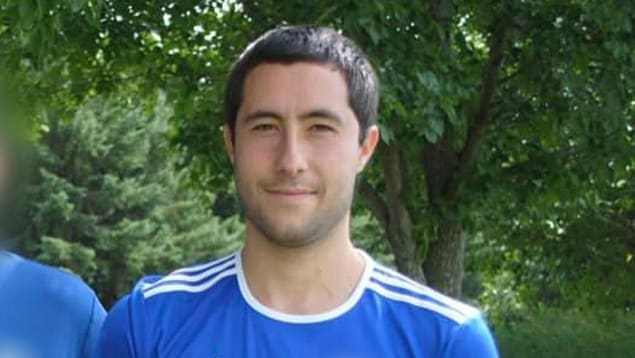A short boy underwent leg lengthening surgery, a successful first step in improving his quality of life, allowing him to grow up to 40cm.
“The goal in life is to make it work,” assures 10-year-old Jacob’s mother, Maria Fiorillo. “We’re not doing this to distort what he is, but society isn’t changing. Everything is complicated.”
When he was born, Jacob surprised everyone: he was a dwarf. His four brothers and sisters, who do not have the same father, do not have the disease. Both parents had no history of dwarfism in their respective families.
From a young age, his mother wanted to find a solution to help him. While searching the internet, joint lengthening surgery was discovered. However, the Montrealer lamented that none of the doctors at the children’s hospitals were willing to operate on Jacob.
“They said the child has to be 14 years old and choose himself,” explains the 40-year-old nurse.
Also, Mrs. Fiorillo was willing to pay a lot of money to help her son and get to America.
“I don’t care if it’s $100,000 or $200,000! I would have saved all the money. I wanted him to live a normal life.”
Eventually, the mother contacted Dr. Marie Kdalewicz, an orthopedic specialist who specializes in this surgery.
“She was like an angel to us,” Ms. Fiorillo says.
“It hurt so much”
In addition, surgery is reimbursed by the Régi de l’Assurance Maladie du Québec. In February 2021, an eight-year-old boy underwent his first leg-lengthening surgery.
In total, the surgery lengthened both of his femurs by six centimeters and his tibia by four centimeters.
For several months, the child had external implants that helped stretch the bones (bony distraction). Obviously, the surgery was not without pain. Jacob had to be homeschooled for months and could barely walk.
“It hurt a lot,” he recalled.
In a few years, Jacob was able to undergo three more surgeries: two on his legs, and one on his arms. In total, the baby can gain up to 40 centimeters in legs and 10 centimeters in arms.
“Stretching the arms helps a lot, because short people don’t have the ratio. Often, they have problems with hygiene,” says Dr. Gdalewicz.
Easy with kids
The latter suggests that surgery is easier for better functioning children. “Children are very determined,” says the doctor.
Today, the 1.21m boy says he is ready for surgery again. “I want to make it big,” he says, although he says he could do everything like his friends.
Although she is happy with her son’s progress, Ms. Fiorillo condemns teasing short people.
“It’s such a shame for them, the parents,” he often cried.
Prolonged surgery in short children
First surgery
8 to 12 years ➞ legs 10 cm long
Second surgery
12 to 16 years ➞ legs 15 cm long
Third surgery
About 16 years ➞ Arms length 10 cm
Fourth surgery
18 years and above ➞ leg extension 10 cm
Finding a hospital is not that easy
Although joint lengthening surgery is reimbursed by the public scheme, only two hospitals agree to operate on these patients, laments a surgeon.
“Children’s hospitals don’t want to do them, confirms Dr. Mary Gdalewicz, an orthopedic surgeon. But, it’s functional, not aesthetic.
Each year, Dr. Gdalewicz operates on three or four short people who want limb lengthening. He believes he is the only specialist in Quebec to perform these surgeries, and also performs the surgery on patients elsewhere in Canada.
However, although the surgery is reimbursed by the Régie de l’assurance maladie du Québec (congenital malformation), only the University Hospital Center of Sherbrooke and the University Hospital Center in Quebec City (CHUL) accept these patients.
“We had to pay for a hotel room for a week,” recalls Maria Fiorillo, whose son Jacob had surgery at CHUL, even though they lived in Westmount.
Consent of the child
Dr. According to Gdalewicz, children’s hospitals deny these cases because they don’t believe the benefits of the surgery and want patients to be of legal age to consent.
However, she always promises to get the child’s consent.
“The child has to agree. There’s a lot of physiotherapy. If he doesn’t participate, it won’t work, she says. I, I’m not here to judge, that’s not my role. My role is to do it safely.”
Not for everyone
According to the Quebec Association of Small People, this activity is somewhat in the community.
“Some people think about it, others don’t want to do it, and it’s personal to everyone,” says Nathalie Labelle, the association’s admissions counselor. Not everyone is ready to go through this.

“Music geek. Coffee lover. Devoted food scholar. Web buff. Passionate internet guru.”





